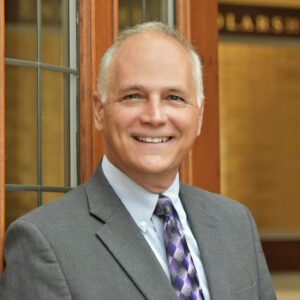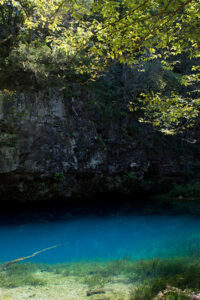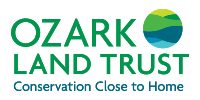Five Questions with Jim Reeves

Photo Courtesy of Washington University
Jim Reeves (Board President 2018-2021), is the Principal at Clear Bridge Consulting, providing mediation, facilitation and conflict management services to individuals, businesses and not-for-profit organizations. As an attorney with litigation and executive leadership experience, Jim has been a mediator for over 20 years, mediating business and legal disputes and convening multi-party processes to resolve legal, organizational, community and public policy disputes.
Jim has a passion for nature and the wilderness and is keenly aware of the threats of encroachment and environmental degradation of wilderness areas. He brings legal knowledge and analysis, conflict management, facilitation, leadership, strategy development, workshop/presentation skills, and negotiation skills to the Ozark Land Trust Board.
Join us in reflecting on Ozark Land Trust’s past 40 years as we sit down with former board president Jim Reeves.
How has OLT evolved over the past 40 years to meet conservation challenges in the Ozarks?
I think some of the evolution I have seen and from what I know about its history is that OLT has become more sophisticated. Our founders were steeped in conservation. It was a small group, and they carved out an amazing organization. Since that time, OLT has grown. We have over 30,000, almost 35,000 acres under protection. We’ve also recognized the value of partnerships, working with state and federal agencies, working with landowners, getting our word out, and using social media so that people become more aware of what we do.
One of the things I really love about OLT and its mission is that this is not an organization or a governmental entity that’s coming in saying you have to do this. “Landowner, we’ll tell you what to do with your land.” Instead, this is an opportunity if you’d like to take advantage of it. And I think landowners recognize that. And they want to exercise that autonomy and use their land however they want.
And so, you know, we have discussions and saying, look, we can do a conservation easement, we can help you with conservation practices, but it’s all going to be your choice.
So, I think recognition of the landowner’s autonomy, reaching out to landowners, helping them understand what we do and what we don’t do, and helping them understand that they have a lot of control over the process are all things that have developed and become much more ingrained in our processes now at OLT.

Do you have any like conservation or Ozarks heroes?
Well, I think all of the founders of this organization are heroes, and I’m not just saying that. I really mean that. When I think back, what it would have been like 40 years ago, and, you know, for a group of people to put their heads together and their ideas together and say, you know what, we need to do something focused. We need to form an organization that will help landowners conserve their property. And to the extent we’re able, we need to be aware, mitigate development, make it smarter, and make it so people can still enjoy land. I mean, I think the forethought of our founders is just – it amazes me. And now, looking back on it over 40 years, what they have created for me is mind-boggling and really, really amazing.
Do you have any special stories about an OLT landowner you’d like to share?
Well, we’ve had several. In my position, I have had the opportunity to meet some landowners, but not a lot. But we’ve had, you know, the landowners who opened their doors to visitors from Ozark Land Trust and supporters of Ozark Land Trust, and, you know, I love touring properties where we have a conservation easement in place. What is cool about it is, the landowners are so proud of what they’re doing, and they work so hard and so conscientiously to build on the opportunity of having conserved land. And it is really much fun to see how proud landowners are when we go out on a tractor or a little four-wheeler and tour property, and they are just so excited about pointing out all the things they’re doing in their land to further conservation. And those are the stories I really really enjoy.
What do you think of when the Ozarks come to mind?
For me, it’s the Turquoise Springs. I did some facilitation work with the National Park Service years ago. They were working on the general management plan for the Ozark Scenic Riverways, the Jacks Fork and the Current River, and I spent a lot of time just exploring the area down there when I wasn’t meeting people. I was just absolutely blown away by seeing these incredibly deep turquoise blue springs percolating up. It is mind-boggling. It is just so beautiful. And that’s what comes to mind when I think of the Ozarks. I think of the rivers, and I think of the springs.
OLT has community conservation among its goals. What does community conservation mean to you?
When I think of community conservation, I think of one of the changes we made in our tagline: “Conservation close to home.” That was a tagline that we adopted a few years ago, and when I think of community conservation, I think of people in communities, in neighborhoods who look around and say, you know, even in an urban area, we may not have acres and acres of land, but we do need green space. We do need places for people to go. And when I think of community conservation, I think of the development of those kinds of projects. They could be small, but they can have a tremendous impact on a neighborhood or a community.
Hear more from Jim Reeves here on our YouTube channel, and be sure to follow @ozarklandtrust for more!
